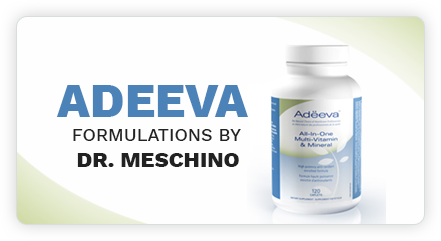
The Fountain of Youth: The Evolutionary Significance of Staying Active in Later Life
Source: Proceedings of the National Academy of Sciences (December 2021)
Lifestyle Medicine Update (Dec 1, 2021)
Introduction:
In a groundbreaking study published in the December 2021 issue of the Proceedings of the National Academy of Sciences, a team of evolutionary biologists and biomedical researchers unveiled a fascinating revelation. They delved into the evolutionary and scientific evidence suggesting that humans, who continued to live long after their reproductive years, remained physically active in their later stages of life. Not only did this discovery shed light on our ancestral past, but it also highlighted the profound benefits of staying physically active in later life.
The Link Between Physical Activity and Health
The research team argued that maintaining physical activity in later life plays a pivotal role in reducing the risk of various debilitating conditions. These include cardiovascular disease, type 2 diabetes, osteoporosis, Alzheimer’s disease, depression, and even certain types of cancer. Surprisingly, physical activity’s impact on these conditions goes beyond mere exercise; it affects energy allocation within the body, directing resources toward vital repair and maintenance processes that counteract age-related deterioration.
Energy Allocation for Longevity
Humans, it seems, have evolved to stay active as they age, allocating energy resources strategically to prolong their health. Physical activity directs energy towards repairing muscle fibers, mending cartilage damage, and healing microfractures. Additionally, exercise triggers the release of exercise-related antioxidants and natural anti-inflammatory agents while enhancing blood flow. Collectively, these mechanisms significantly lower the risk of developing diabetes, obesity, some cancers, osteoporosis, Alzheimer’s disease, and depression.
Historical Insights: The Hunter-Gatherers
To gauge just how much physical activity is needed for a long and healthy life, researchers turned to historical evidence. Contemporary hunter-gatherers, who lived approximately 40,000 years ago, offer intriguing insights. These ancestral humans engaged in an impressive average of 135 minutes of moderate to vigorous physical activity per day. Remarkably, those who survived childhood often lived up to seven decades, roughly two decades beyond the reproductive age limit.
Contrary to the belief that early human lifespans were notably short, fossil evidence suggests that extended lifespans were relatively common by 40,000 years ago. Equally surprising is the fact that these hunter-gatherers burned six to ten times more energy each day than today’s average North American adults.
Dr. Daniel Lieberman, the lead author of the study, emphasizes, “Because we evolved to be active throughout our lives, our bodies need physical activity to age well. In the past, daily physical activity was necessary for survival, but today we have to choose to exercise, that is to do voluntary physical activity for the sake of health and fitness.” Furthermore, Dr. Lieberman notes that physical activity levels have been on a global decline as machines and technology replace human labor, a concerning trend highlighted by a recent study from his lab showing that Americans engage in less physical activity compared to 200 years ago.
The Imperative of Physical Activity
While previous Lifestyle Medicine Updates have explored dietary and supplementation strategies to slow aging and improve health, physical activity remains a foundational requirement. Exercise is a unique and essential component of promoting health, longevity, and reducing the risk of degenerative diseases. It complements a prudent diet and personalized supplementation program.
Endorsing the combination of resistance training and endurance activity, this approach helps preserve muscle strength, balance, bone density, and blood flow while benefiting the heart, brain, lungs, and overall circulation. Simply put, there is no substitute for exercise when it comes to achieving these specific health outcomes.
Finding Your Exercise Regimen
While formal aerobic exercises such as jogging, cycling, or high-intensity dance classes offer clear benefits, there’s room for personalization. Engaging in sports or activities that provide endurance training benefits can be an excellent alternative for those who may not enjoy traditional aerobic exercises. The key is to discover an activity that suits your preferences and can be pursued regularly, with a target of at least 60 minutes of moderate exercise intensity each day.
Conclusion
In summary, the remarkable findings from the Proceedings of the National Academy of Sciences study highlight the enduring connection between human longevity and physical activity. As we continue to evolve in a world dominated by technology, the choice to exercise becomes increasingly critical. The evidence is clear: to unlock the fountain of youth, we must embrace physical activity as an indispensable partner to a prudent diet and personalized supplementation program.
By acknowledging our evolutionary heritage and committing to an active lifestyle, we can significantly reduce the risk of cardiovascular disease, type 2 diabetes, osteoporosis, Alzheimer’s disease, depression, and even certain cancers. In doing so, we harness the power of our own biology to promote a longer, healthier, and more fulfilling life.
References
- Daniel E. Lieberman, Timothy M. Kistner, Daniel Richard, I-Min Lee, Aaron L. Baggish. “The active grandparent hypothesis: Physical activity and the evolution of extended human health spans and lifespans.” Proceedings of the National Academy of Sciences, 2021; 118 (50) [Link](https://www.pnas.org/content/118/50/e2107621118).
- “Taking it easy as you get older? Wrong.” Science Daily, November 22, 2021. [Link](https://www.sciencedaily.com/releases/2021/11/211122172720.htm).
Dr. Meschino

Dr. James Meschino
ABOUT THE AUTHOR
Dr. James Meschino, DC, MS, ROHP, is an educator, author, and researcher having lectured to thousands of healthcare professionals across North America. He holds a Master’s Degree in Science with specialties in human nutrition and biology and is recognized as an expert in the field of nutrition, anti-aging, fitness, and wellness as well as the author of numerous books.


